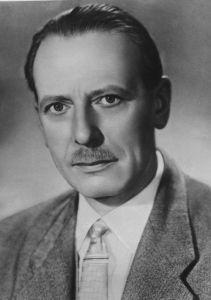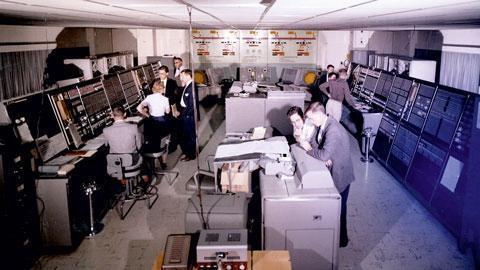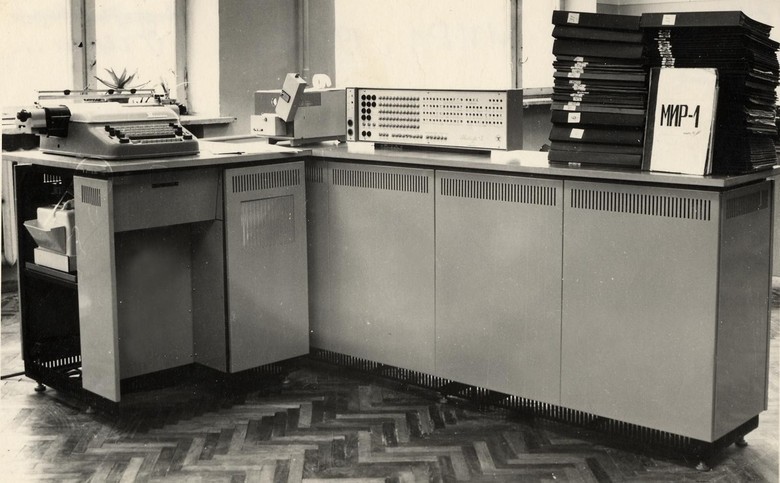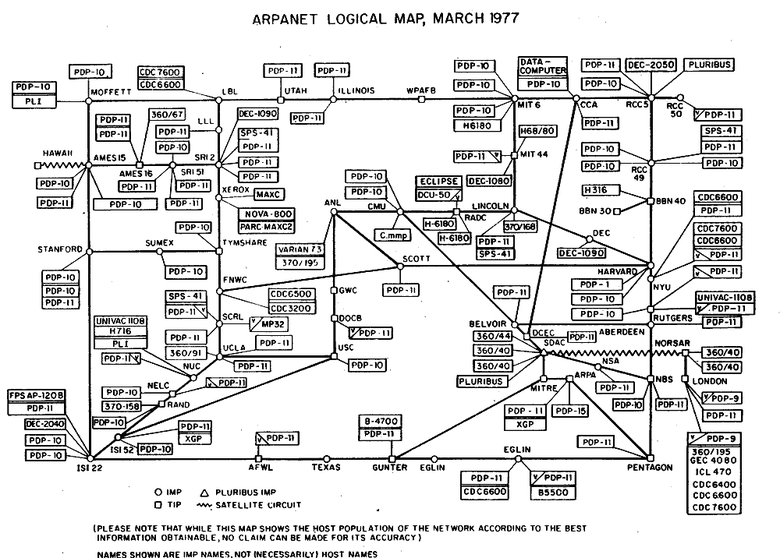Ghost of the Internet in the USSR

The other day in Russia celebrated the Day of the Internet. In 1998, IT Infoart Stars sent letters to various organizations with a proposal to appoint September 30 as the Internet Day and to conduct a census of the “Runet population”. Then this figure had 1 million users. Today, after 18 years, this figure has more than 80 million users .
In other countries, the International Internet Day is celebrated on April 4, on the day of the death of the medieval Archbishop of Seville, Saint Isidore, who is the creator of the first encyclopedia - “Etymologiae”, consisting of 20 volumes. It was he who was appointed by the Catholic Church as the patron of the World Wide Web, which called the Internet a modern encyclopedia of human knowledge. Saint Isidore of Seville first applied the cross-reference system in his encyclopedia, resembling today's hyperlinks on the web.
')
The need for the Internet appeared during the Cold War, when the United States needed a reliable information transmission system that would carry out its work in case of the destruction of a part of computers by a nuclear strike. In the USSR, in parallel, there were also developments in the field of computer communication, beginning in 1952. They were carried out within the framework of the military-industrial complex and were supposed to ensure the strengthening of the country's defense capability.
Soviet development
A. Kharkevich Military Computer Network
The idea of creating a single computer network in the USSR appeared in 1962. The head of the Technical Physics Department of the Kiev Institute of Physics, Academy of Sciences of the Ukrainian SSR, Alexander Kharkevich, published an article in the journal Kommunist, in which he put forward the idea of creating a single computer network. He drew parallels between such a network and the networks of transportation of goods or electricity, and proposed the creation of a Unified National Information Transmission System that would work on the basis of the already existing telecommunication channels.

The key place in it was assigned to computing and control centers, which were to receive data in digital form - “a sequence of some numbers”. Kharkevich noted that the network structure should take into account the possibility of overload or failure of one or another of its sections. In this case, the data stream must be directed along a detour route. According to this principle, the Internet is now working. Uninterrupted network operation must be ensured through centralized automatic control.
In the article, he noted the existence of analogues of such a system abroad - Sage (Semi-Automatic Ground Environment), but they do not have a single command center and are divided into various companies and departments. SAGE, a semi-automatic system capable of simultaneously processing data from 23 regional centers in the United States and Canada, while serving a giant network of radars and other detectors, was created to control the entire US air defense. I / O devices of the system maintained continuous communication between neighboring centers via telephone lines.
Cybernetics at the head
The CPSU program, adopted at the 22nd Congress in October 1961, assigned cybernetics a leading role in the development of the country. Computer systems were supposed to be used in production processes, construction, planning, scientific research and other areas. Initially, a small group of scientists was engaged in the development of models and methods of computer planning and economic management. But soon, in 1960, the first cybernetic conference was organized. About 40 institutes were engaged in the automation of the national economy. By 1967, the Scientific Council on Cybernetics coordinated research conducted by 500 institutes.
The very first developments in the field of computer networking and automated management of the country's economy assumed the use of existing communication and computer capacities in the USSR. They were created in response to the American SAGE.

The USSR intended to use the power and throughput channels of air defense and missile defense systems to create a centralized system for collecting and processing statistical information for peaceful purposes.
National automated accounting system V. Glushkov
In November 1962, Chairman of the USSR Council of Ministers Alexei Kosygin invited Victor Glushkov, director of the Kiev Institute of Cybernetics, to his office. Glushkov proposed a new plan, according to which a network was created that was not connected with the military unified network.
The plan for the implementation of a computer network assumed the creation of 100–200 largest data processing centers in large cities, to which 20,000 small cities will be connected via high-speed communication lines.
Glushkov developed this plan not only with mathematicians, but also with economists. Therefore, the main objective of the project was to facilitate the collection of data in the departments and at work. At this time, in the USSR, data were collected separately and through various channels that did not overlap with each other. The project involved the creation of a centralized collection of information.
An obstacle to its implementation was the ability to connect to a single network of all enterprises. The process of computerization in all industries led to the writing of software that is incompatible with the software of other enterprises. This meant the impossibility of introducing a single system.
It all started with the world
Glushkov created the world's first personal computer - the MIR 1, a machine for engineering calculations, which he presented in 1967 at an exhibition in London. Computers of that time occupied several rooms, while MIR 1 was placed on a desk and used all the basic principles of a modern PC. It used stepped microprogram control. Some researchers rightly call MIR the prototype of a modern computer.

At the MIR 1 exhibition, we bought IBM, which supplied almost 80% of the computing equipment worldwide. This was the first and last case of the purchase of a Soviet electronic machine by an American company. The Americans bought the car not only to study, but also to prove to competitors who patented the stepwise microprogramming principle in 1963 that Soviet scientists implemented this principle in mass-produced machines.
Glushkov was given an international certificate, according to which he was recognized as the creator of the world's first personal computer.
WORLD and Internet
It was supposed to create and launch a system consisting of hundreds of devices of the MIR type, which were connected to one network according to a principle similar to the principle of the modern Internet. At the final stage of the development of MIR, Glushkov proposed using it for the operation of a nationwide automated economic management system. Thus, the project of the Soviet Internet was ready for implementation in the autumn of 1963.

According to Glushkov’s plan, the Soviet Internet would have amounted to 20 billion rubles, and the payback would be at least 100 billion rubles over three five-year periods.
Due to the change of power, the attitude to this project has changed. Automated control systems have found application only in defense enterprises. Work in this direction has been shelved.
Meanwhile in America - ARPANET
But in America, things were different. Scientist Joseph Karl Robnett Liklider demonstrated the idea of creating an extensive computer network in the United States several months after the presentation of the Glushkov information network project in February 1964. This was the first step towards the implementation of the ARPANET system.
Two years later than in the USSR, in 1966, a preliminary draft of an information network was launched in America, and by 1969 it was implemented.

On January 1, 1983, ARPANET became the first network in the world to switch to routing data packets. TCP / IP was used as a routable protocol, which to this day is the main data transfer protocol on the Internet. This date is the date of the appearance of the modern Internet.
Sunset of the USSR and Relcom
On August 1, 1990, the first network of the union scale appeared - “Relcom” (the name is derived from RELiable COMmunications - reliable communication), which became the progenitor of Runet. The network appeared on the basis of the Institute of Atomic Energy. I.V. Kurchatov and was formed by developing and implementing an e-mail system using Internet addressing for computers connected by telephone channels. At the first stage, it included users from scientific institutions in Moscow, Leningrad (St. Petersburg), Novosibirsk and Kiev.
On August 28, 1990, the first session of a modem connection of a Soviet computer (Kurchatov IAE) with a foreign terminal (University of Helsinki) was held with the aim of organizing a regular channel for transmitting mail via the Internet (with time-based telephone connection). The network was based solely on UUCP e-mail technology, and with the possibility of correspondence in Russian.
On September 19, Relcom and Demos registered a top-level .su domain for the USSR.
In the spring of 1991, the value of the contents of the Soviet Internet for domestic users turned out to be higher than the international one.
The further history of the development of the Internet took place already in Russia, since December 26, 1991, the collapse of the USSR occurred.
Conclusion
The USSR’s ambitious plans for creating the Internet were far ahead of their time. Technological capabilities allowed to create this network back in 1963. But she faced many problems associated with its implementation. It is not by chance that the Internet is considered the fifth power - it is a sign of the freedom of society, which opens up the whole treasury of knowledge, which has no limits. The ideology of a socialist state could not allow in its verified (like any mechanism) structure an element of freedom, to predict development and the consequences of which is rather difficult.
Sources:
Source: https://habr.com/ru/post/397881/
All Articles